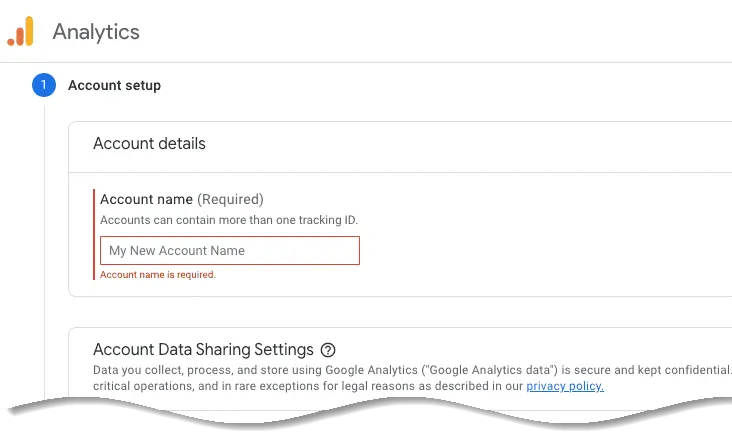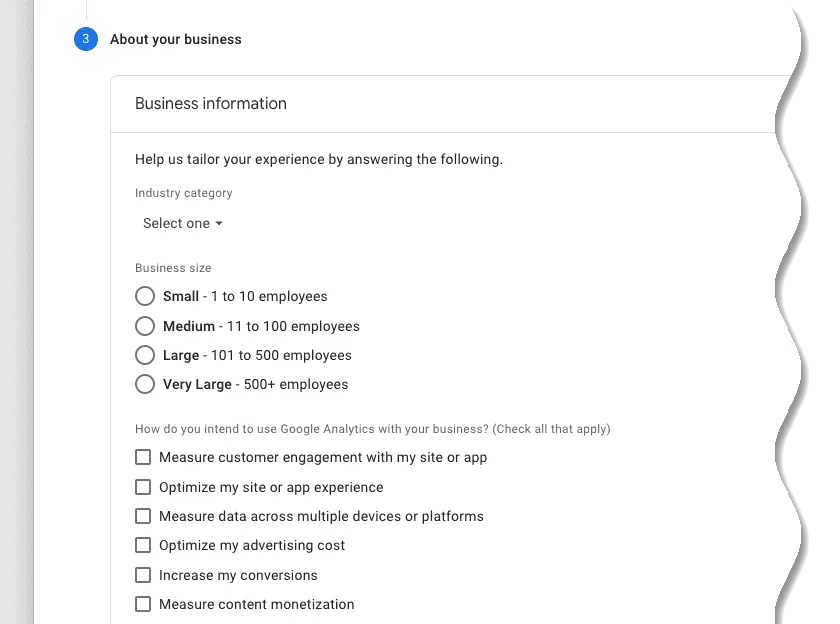When you set up a business website or blog, the primary goal is to attract visitors and, hopefully, have them convert into paying customers further down the line.
Google Analytics (GA) allows you to measure the metrics behind these goals, as well as provide a wealth of other valuable data.
However, setting up Google Analytics can be hard (to put it mildly). Luckily for you, this guide will show you how you can set up Google Analytics for your website.
Step 1: Create Your Google Analytics Account
Your GA account is how you will administer and manage your GA activities. However, before you can set one up, you will first need to sign in to your regular Google account.

Once you are logged into your Google Account, You will be taken to the account creation page where you will be asked to complete the following three sections:
- Account setup
- Property setup
- Add business Information
Account Setup
You have two decisions to make here.
- Enter your account name.
- Decide what data you want to share.
- Click the “Next” button.

Property Setup
Property is the service you measure, such as a website, application etc.
- Enter a property name.
- Enter your time zone.
- Enter the currency that you use.
- Click the “Next” button.

Add Business Information
Analytics uses the information to tailor your experience.
- Select your industry category.
- Select business size.
- Tick the boxes for how you are planning to use Analytics.

Once complete, click the “Create” button. You will be asked to read and accept Google Analytics’ terms of service, and then arrive at your GA dashboard.
Step 2: Set Up Your Data Stream
Chose the platform where you are collecting data. Then, click the relevant platform to continue.

We are continuing with “Web” as the example in this tutorial.
Then, enter data stream details.
- The URL to your site.
- The name that you want to give the stream.
- Decide if you are to enable enhanced measurement or not.
- Click on the “Create stream” button to continue.

Here, the enhanced measurement can give the data more context. That means, Google automatically assigns several enhanced metrics to measure, alongside the “standard” metrics, such as page views, scrolls, and outbound clicks.






























Add comment